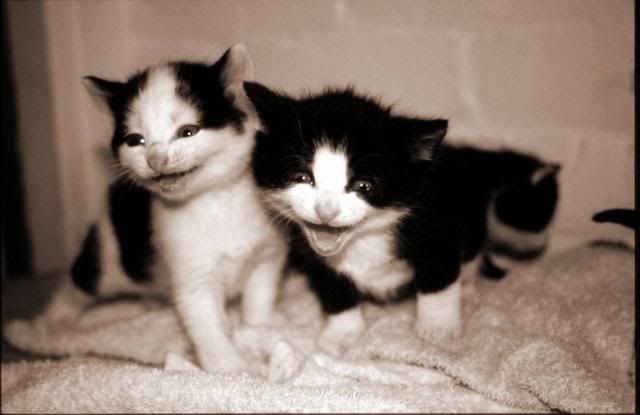
I can hear the ahhhhs over the above kitten picture but my reaction this week is not so fuzzy.
I have been getting cranky over all of the people dumping their animals or trying to re-home them. This may have something to do with my not feeling up to speed (no filters) but it irks me that they don’t think about the animal’s emotions, the human-animal bond, and most never seem to give it a second thought.
In some ways living here is like being back in the dark ages of animal husbandry and care.
In fact, I am going down-the-hill with a friend because his cat has ongoing issues–and at the last visit to a clinic–the vet didn’t draw any blood to double check. It was my complaining that made him ask for a blood test after the first visit in the first place. Liver issues–let me just say that I found him a cat specialist down the hill and I’ll leave it at that.
Anyway, because I work with animals everyone thinks I am a good source to approach about finding new homes for their pets–some how I might be the answer to their problem.
I have news–nobody I know is looking for another pet and with kitten season in full bloom I am really not too happy about getting calls or getting asked if I can help them find a new home for their pet.
Guess I should be happy they are not getting dumped in the woods…
One of the stories I will share is from just last week. Someone came to help move her elderly parents out of town. She locked the animals in the house, gave the keys to the landlord and said, “By the way, the animals are in the house you’ll need to handle that.”
Grrrrrrr.
Kitten season is such a problem that groups such as the Humane Society of the United States address kitten season on their website. Outdoor cats breed which is why cat colonies grow.
Some surprise their owners with a litter. Whoops, did they not spay or neuter their animals?
Every February there is a push for spay and neutering during Spay Day USA and there are low cost spay and neuter clinics around California. If people check locally many vet clinics offer discount days for such procedures. There are also private parties who gather spay neuter lists to help stop the problem.
Shelter staff don’t look forward to the influx of cats and kittens–and I certainly hate seeing the signs all over town for “free kittens.”
Most of the animals in the local shelters won’t make it out.
Those that live outside often become food for the local predators (coyotes, cougar, bobcats) or are exposed to a variety of illness and other threats.
When I was in San Diego I met Gerri Calore and some of the gang at the Feral Cat Coalition and Alley Cat Allies. Feral cats are those that live in colonies and to control the growth.
Most feral cat groups Trap-Neuter-Return (TNR) the animals in the colony. This prevents the colony from growing and is an effort that has been found to work well.
If you are looking for tips and hints I like Carol’s Ferals website. Shows what one person can do if motivated!
So, please encourage anyone you know with a new pet to make a lifetime commitment and to get that pet into the veterinarian for spaying or neutering soon…and don’t ask me to help you place a pet…at least not this week!


